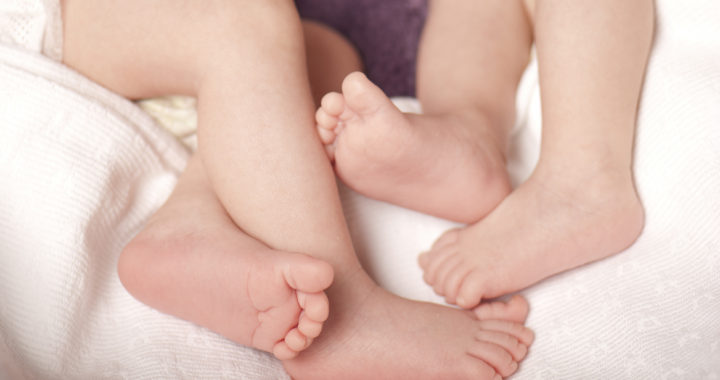Children begin to walk anywhere between the ages of eight and eighteen months of age. This is when child foot problems become most noticeable. Many toddlers are flat-footed when they first start walking, or tend to turn their feet inwards, because muscle strength and ligament stiffness needs to catch up to other development. These symptoms that your child may have are nothing to worry about. Nearly all types of awkward foot movement your child has will improve once their feet begin to strengthen.
Flat Feet
Normally developed feet have arches, which are located at the center of the foot and are formed by muscles and ligaments. During the first two years, it will seem like your child’s feet have fallen arches. Flat feet are normal in young children. The weak muscle tone in their feet and the generous padding of fat come together with loose ankle ligaments causing the drop to be present. As your child begins to master the art of walking, the muscles and ligaments will strengthen and the fat pads wont be as noticeable. By five years of age, the arches should be fully formed. If they are not and you are still noticing this common form of child foot problems, seek advice from your podiatrist or pediatrician.
Feet That Turn Inwards (Pigeon-Toed)
Many toddlers walk ‘pigeon-toed’ with either one or both feet turned inwards. This is a sign of developing posture and posture, and should resolve itself (without the need for medical intervention) between the ages of three and five. By the time your child is one and a half to two years old, if the problem persists and seems to involve the leg and hip as well you should see your podiatrist for assessment. Excessive ‘pigeon-toeing’ may be caused by an underlying hip or joint problem.
Feet That Turn Outwards (Out-Toeing)
Occasionally, toddlers can walk with their feet facing outwards. This is a tendency in children who were born prematurely. Just like ‘pigeon-toeing,’ this will resolve itself as posture and balance matures. However, if the problem persists or seems to affect the hip and leg- see your podiatrist for assessment.
Other Symptoms that may be problematic in young children that you should see your podiatrist for include:
- Abnormal Shaped Toes
- Persistent Ingrown Toenails
- Bunions or Other Deformities
- Stiffness in the Feet
- Limping
- Favoring One Leg over the Other When Walking
- Severe ‘Pigeon-toeing’ or ‘Out-toeing’
- Flat Feet Beyond Five Years Old
- Sudden Walking Changes
- If Your Child Is Not Walking By Two Years Old

